Yellowstone offers so much to the human visitor — spectacular hydrothermal features, fantastic wildlife viewing, blue waters, gorgeous habitat, and outdoor adventures. During my previous post, I took a detailed look at the volcanic nature of Yellowstone, so with this post I turn my camera lens to the classic beauty of this grand environment, along with its wilder side.
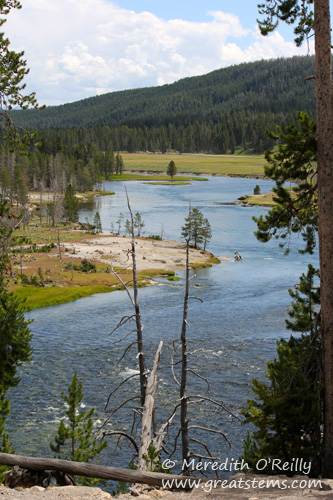
Because the majesty of Yellowstone speaks for itself, I’m not going to interject with a lot of text this time. Just sit back and enjoy….
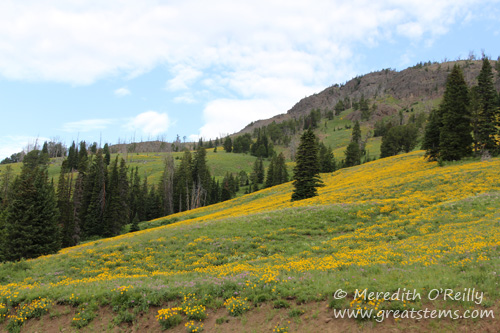
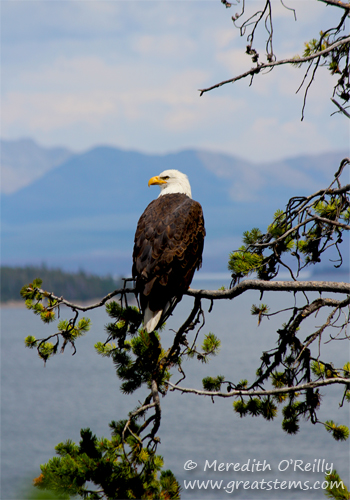
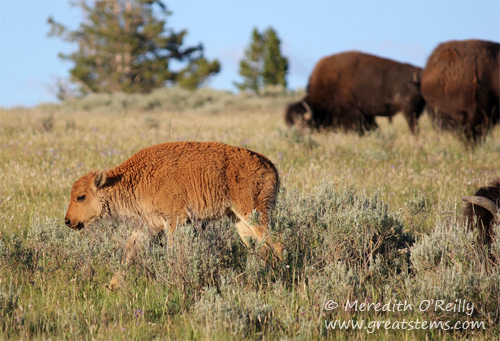
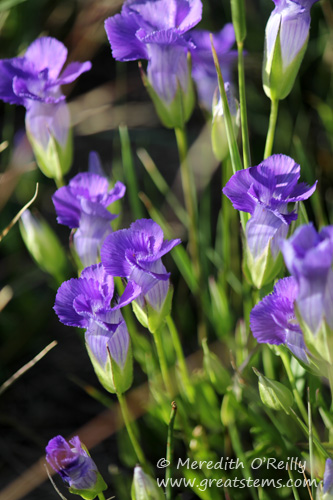
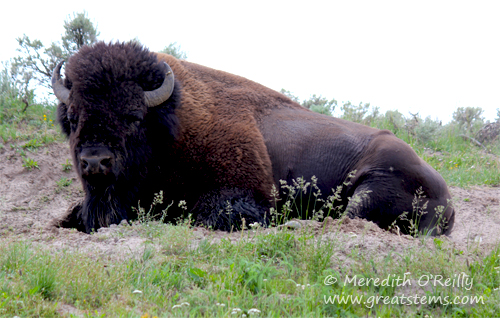
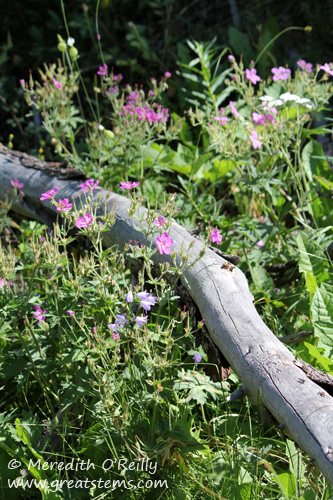
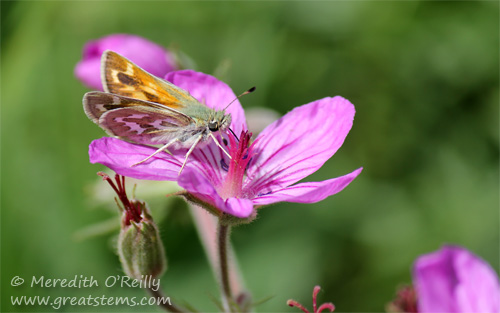
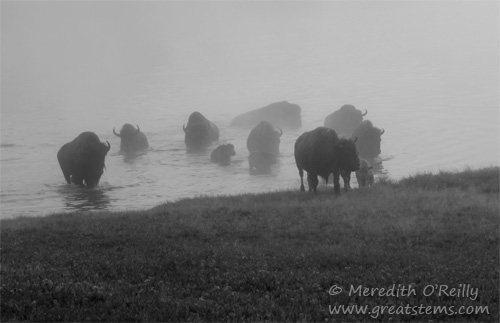
Emerging from the wet and fog…
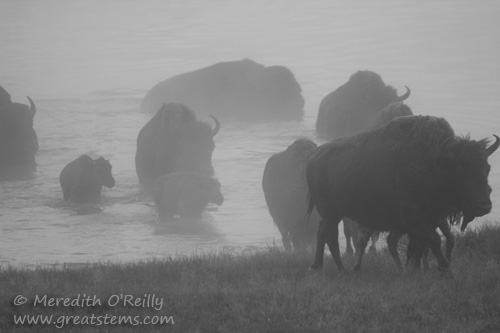
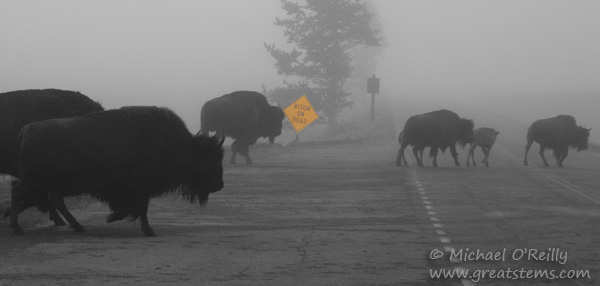
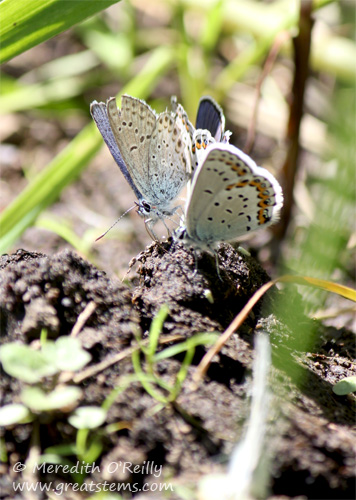
Bison scat, providing nutrients for Melissa Blue butterflies.
Note the germinating seeds, as well. Bison scat
plays an important role in the Yellowstone ecosystem!
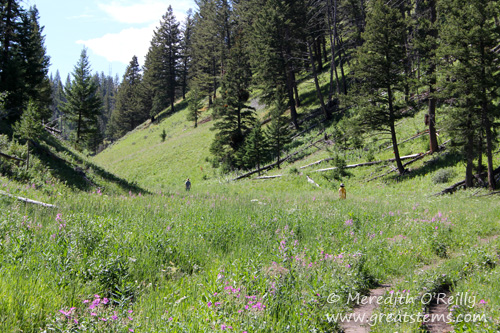
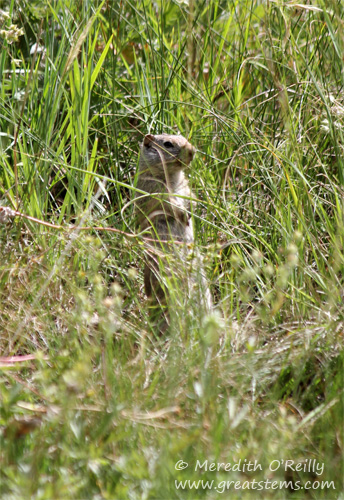
Uinta Ground Squirrel
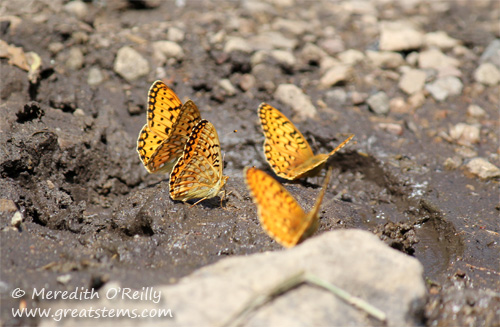
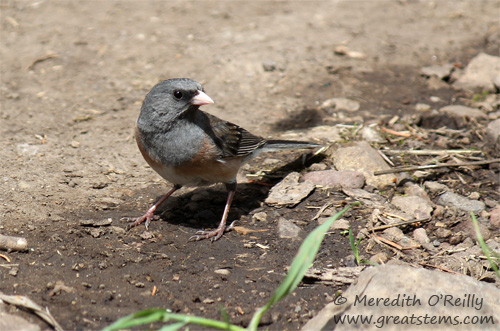
A Dark-eyed Junco, Pink-sided variation, comes in to snatch one of the
puddling Fritillaries
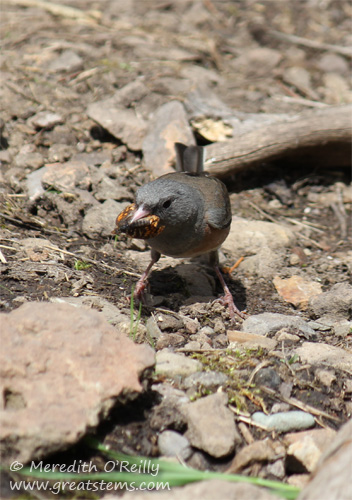
Got it!
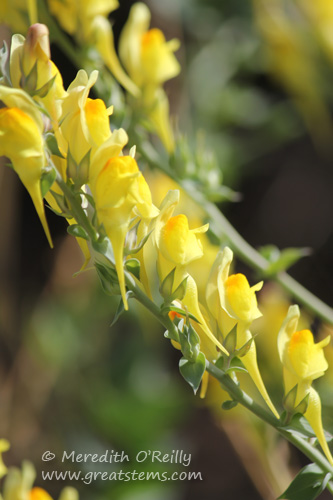
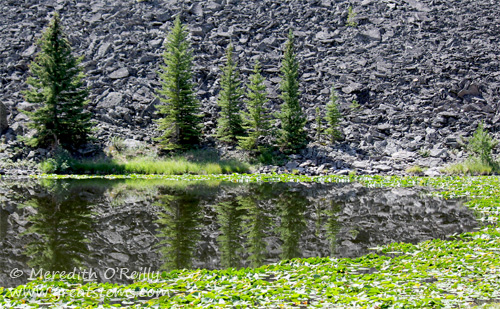
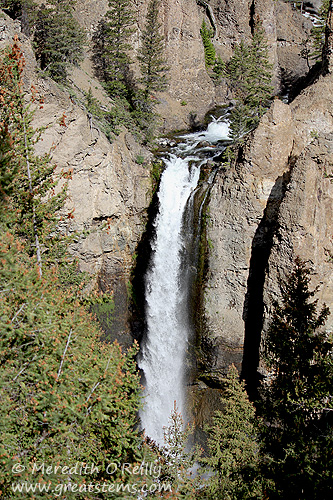
Tower Falls
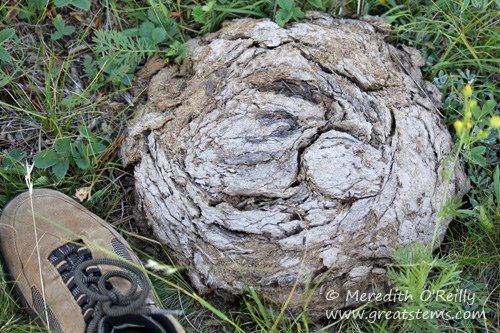
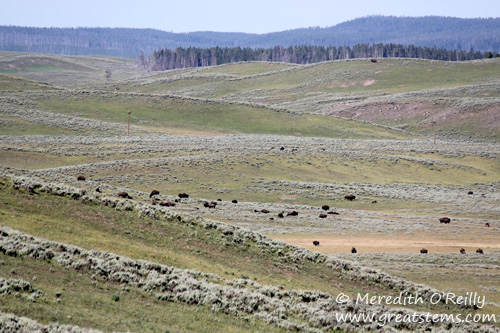
There is a mama grizzly bear and her two cubs in the picture above. No, really! They were wandering among the sage bushes, not minding the bison nearby, but they were hard to see. We could only successfully view them through another person’s powerful scope. Happily, though, we got our closer look at grizzlies in Grand Teton NP. Across the road from the scene above, we also got a look at our first wolf, again through someone’s scope.
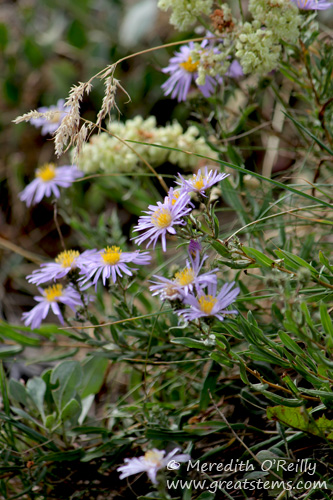
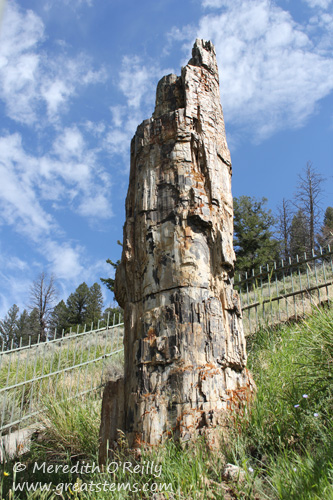
Petrified Tree
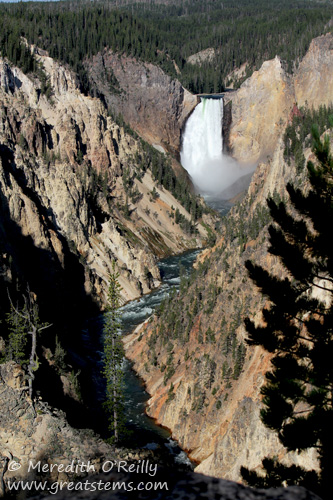
View of the Lower Falls at the Grand Canyon of the Yellowstone
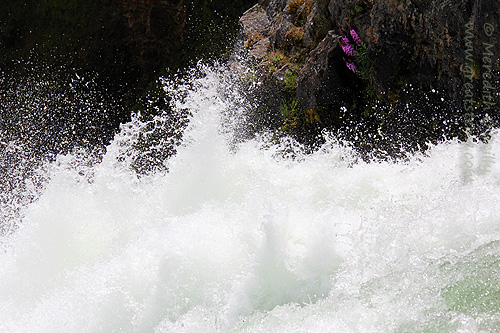
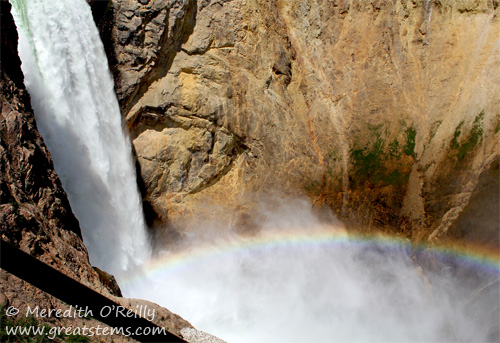
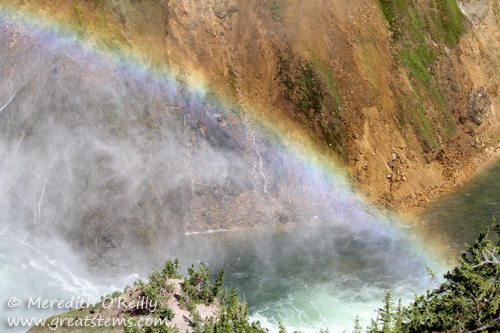
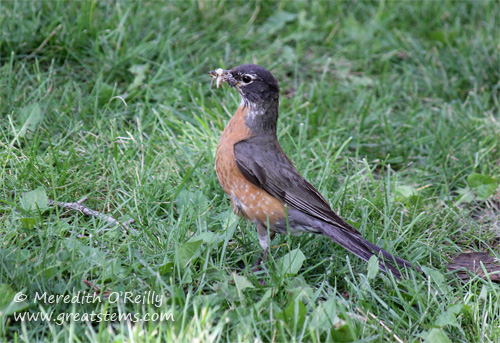
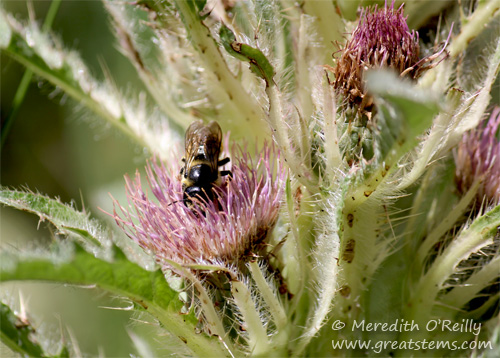
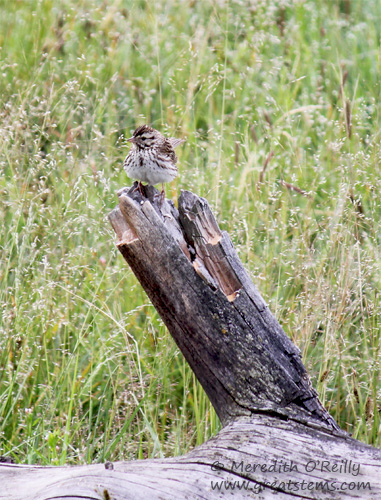
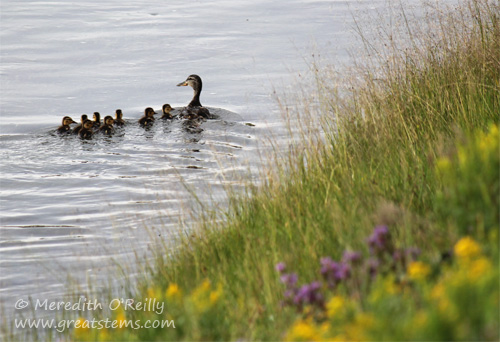
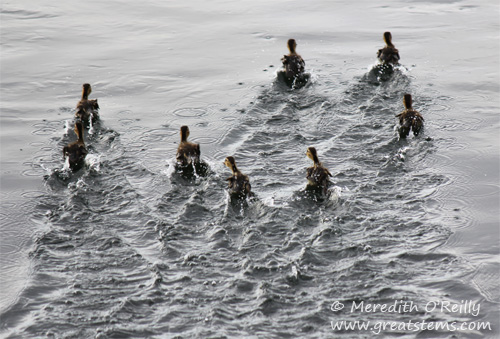
The wee little ducklings got nervous that I took their picture, even
with a zoom lens used from far away. Alas!
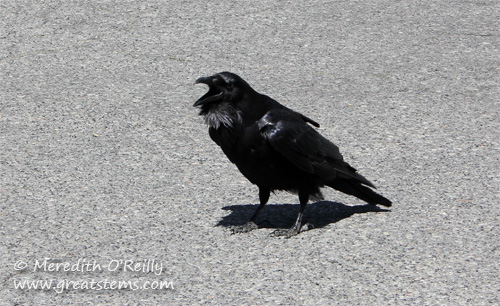
American Raven — crr-rr-uck!
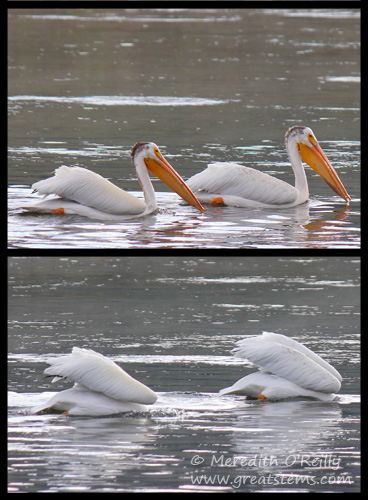
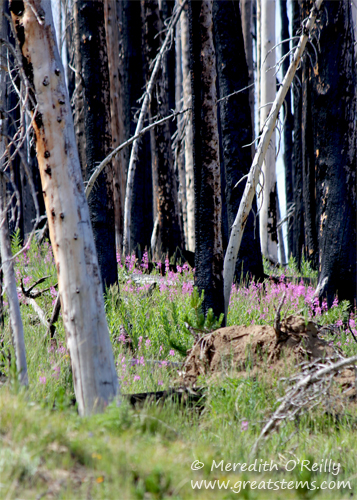
Regrowth after one of Yellowstone’s wildfires.
In some areas, new pines have grown many feet tall.
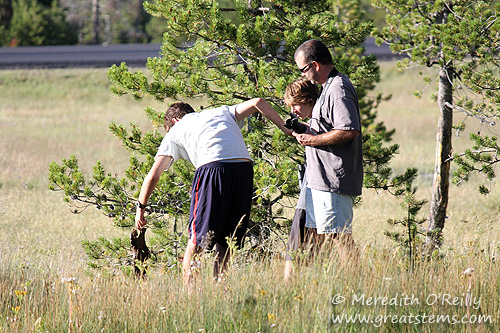
While walking to see an elk, avoid jumping in sulfur-smelling mud.
Tread softly and carry a big zoom lens, my friends.
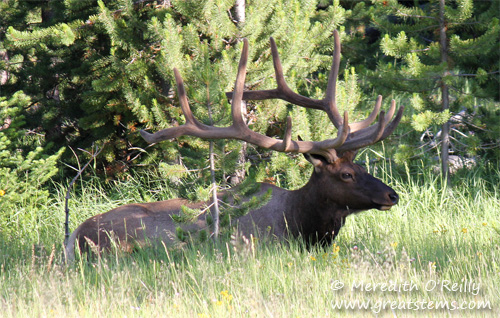
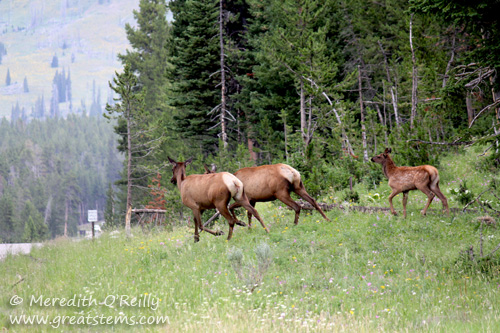
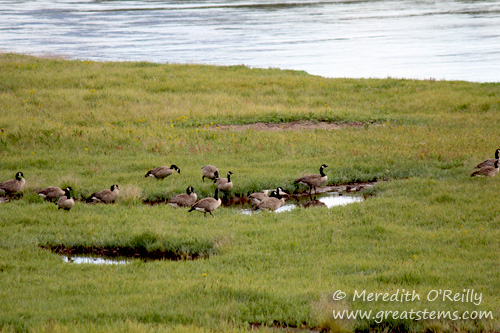
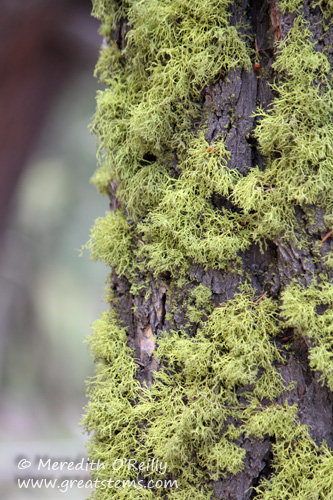
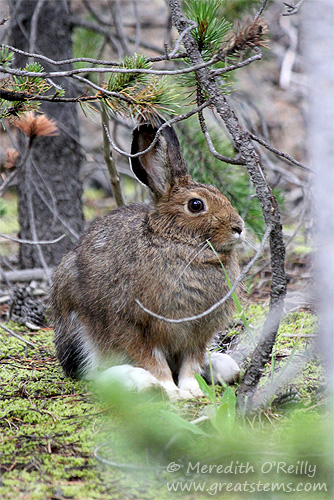
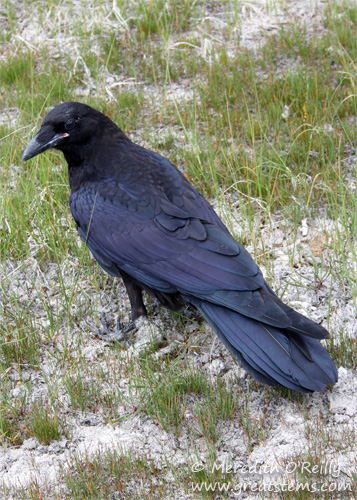
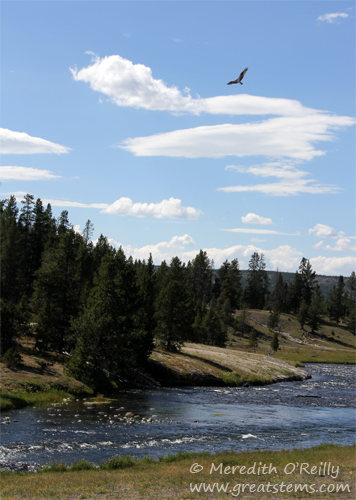
Osprey flying over Firehole River
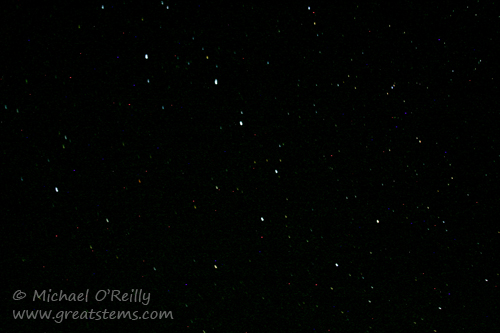
My husband’s first experiment with astrophotography — the Big Dipper
Yellowstone was everything we imagined and more. Thank goodness for men like geologist Ferdinand Hayden, along with painter Thomas Moran and photographer William Henry Jackson, who had the foresight to convince President Ulysses Grant and Congress in 1872 to declare Yellowstone the first American national park, protecting it and its wildlife within and opening the door to the protection of many of our other environmental treasures. That’s not to say that mistakes haven’t been made — the story of Yellowstone’s wolves and bears as an example — but lessons are being learned. Love nature and protect it!
After leaving Yellowstone and dropping my husband off at the Jackson airport, the boys and I headed east toward South Dakota, our last big destination before turning south toward home. Until the next post….
Pingback: Westward Bound: Yellowstone, the Volcano | Great Stems
Your pictures are absolutely spectacular! The bison in the fog are my favorites.
Lori, seeing the bison in the fog was one of our favorite moments. We’d been worried about whether we’d see any wildlife in the dense fog that cool morning, and then we looked to the river at our left and there they were. A very lucky moment, that’s for sure! Thanks so much — M
Meredith this is breathtaking and needs no words. I love watching scenes of Yellowstone and have always wanted to visit. What a glorious place to find solace. The pictures of the bison were amazing.
Donna, plan a visit soon! There is so much beauty, photos can’t even begin to cover it.
Glorious pictures. I especially loved the bison ones too. And please tell me you will be visiting the Badlands and Grasslands National Parks. I’m planning to get there in late Autust and early September, between my New Mexico visit and my Boundary Waters trip.
Marilyn, pictures of the Badlands will be in the next post, I promise! You’ll have to send me details of your itinerary so I can relive all your travel spots with you.
Again, wonderful photos – what type of camera do you use?
Stop making me want to go back to yellowstone, by the way. especially since I’d rather make a trip out to south dakota.
Yellowstone and South Dakota are very close, you know, Katina… that’s how we did it!